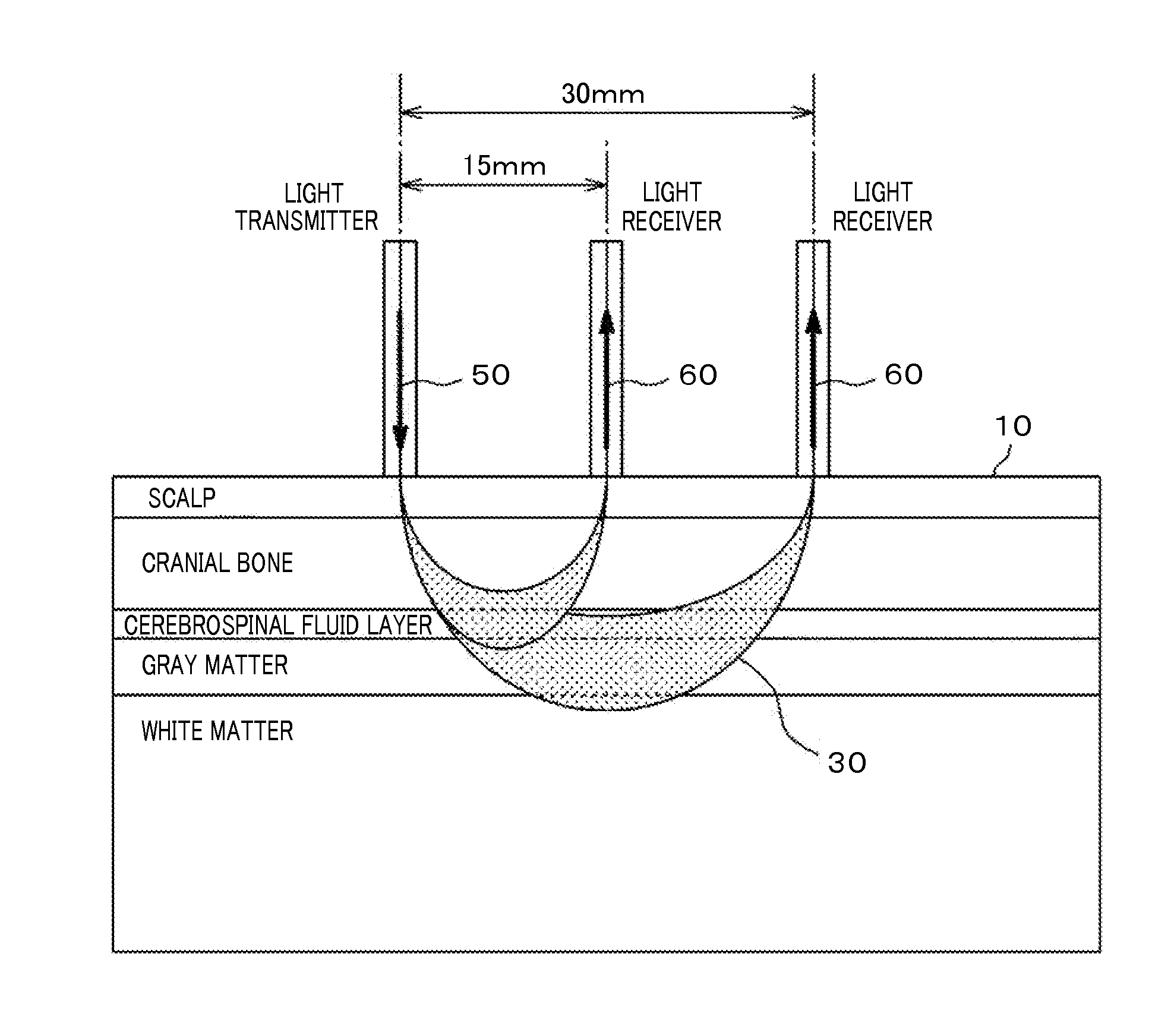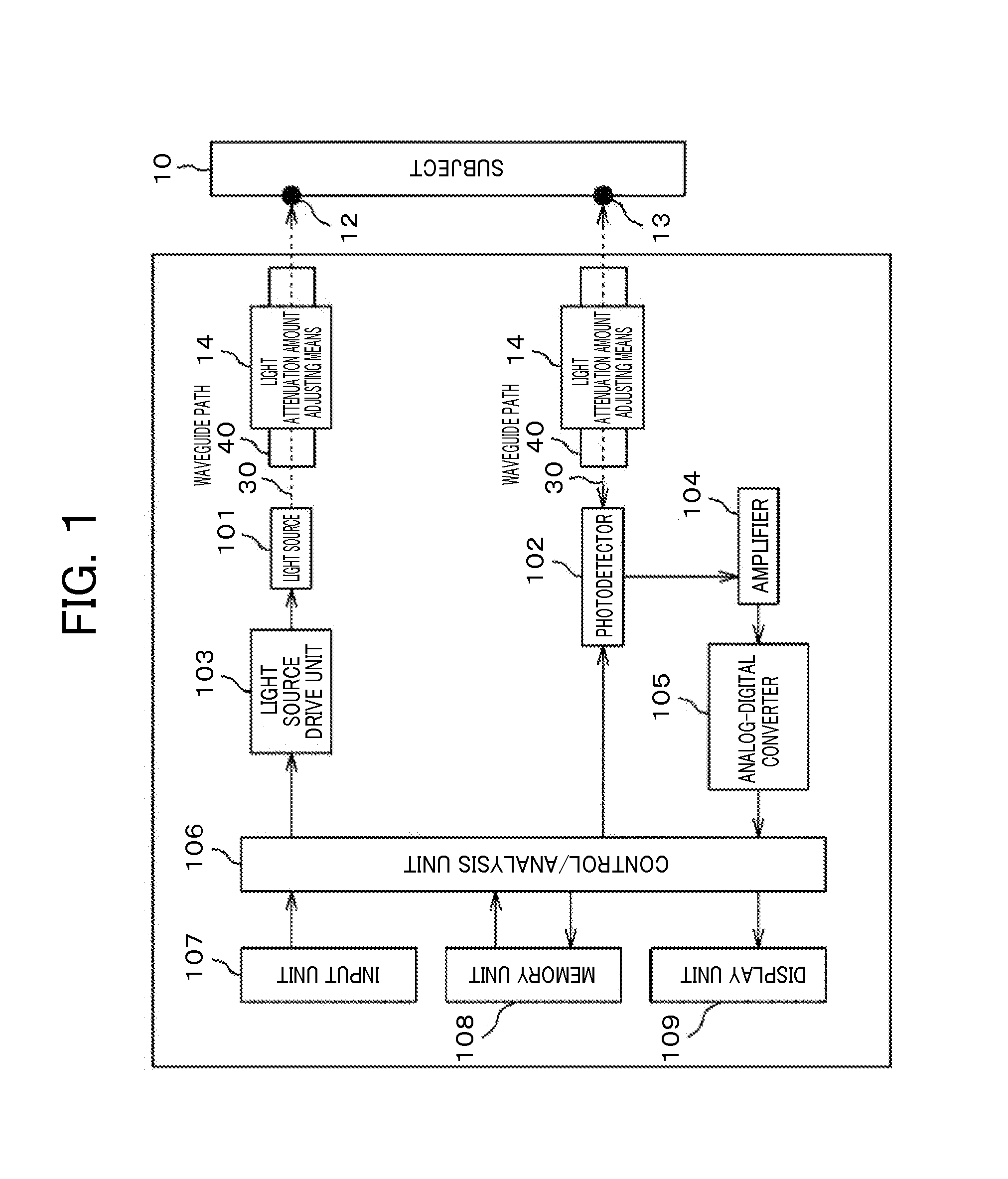Biophotonic Measurement Apparatus and Biophotonic Measurement Method Using Same
a biophotonic measurement and biophotonic technology, applied in the field of biophotonic measurement apparatus, can solve the problems of difficult application, difficult application to two-dimensional imaging used in brain function measurement, and difficulty in stable signal acquisition, and achieve the effect of reducing temporal and personal costs and stabilizing a light reception signal
- Summary
- Abstract
- Description
- Claims
- Application Information
AI Technical Summary
Benefits of technology
Problems solved by technology
Method used
Image
Examples
first embodiment
[0052]In FIG. 1, one example of an apparatus configuration of a biophotonic measurement apparatus of the present invention is shown. In the biophotonic measurement apparatus that makes light incident upon a living body and detects the light that has been scattered / absorbed and propagated in the living body and has gone out of it, light 30 irradiated from one or a plurality of light source(s) 101 included in an apparatus main body 20 is made incident upon a subject 10 via a waveguide path 40. The light 30 is incident into the subject 10 from an irradiation point 12, is transmitted and propagated in the subject 10, and is thereafter detected by one or a plurality of photodetector(s) from a detection point 13 located at a position apart from the irradiation point 12 via the waveguide path 40. The SD distance is defined by the distance between the irradiation point 12 and the detection point 13 as aforementioned.
[0053]Here, one or the plurality of light source(s) 101 is / are a semiconduc...
second embodiment
[0073]Next, a calculation method for the brain contribution ratio using the multi-SD measurement data to be performed by the control / analysis unit 106 will be described. In Patent Literature 3, description is made on the separation method for the brain and skin derived signals, utilizing the signal amplitude or the SD distance dependency of the weight of the component obtained by the signal separation method. In FIG. 13, relations (a) between the SD distance and partial average optical path lengths of the scalp and the gray matter, (b) between the SD distance and the partial average optical path lengths of the cranial bone, the cerebrospinal fluid layer (CSF) and a gross optical path length that have been obtained by Monte Carlo simulation are respectively shown. The horizontal axis is the SD distance (mm) and the vertical axis is the optical path length (mm). In NIRS measurement, since the SD distance influences the penetration depth of the irradiated light, the depth of a target b...
PUM
 Login to View More
Login to View More Abstract
Description
Claims
Application Information
 Login to View More
Login to View More - R&D
- Intellectual Property
- Life Sciences
- Materials
- Tech Scout
- Unparalleled Data Quality
- Higher Quality Content
- 60% Fewer Hallucinations
Browse by: Latest US Patents, China's latest patents, Technical Efficacy Thesaurus, Application Domain, Technology Topic, Popular Technical Reports.
© 2025 PatSnap. All rights reserved.Legal|Privacy policy|Modern Slavery Act Transparency Statement|Sitemap|About US| Contact US: help@patsnap.com



